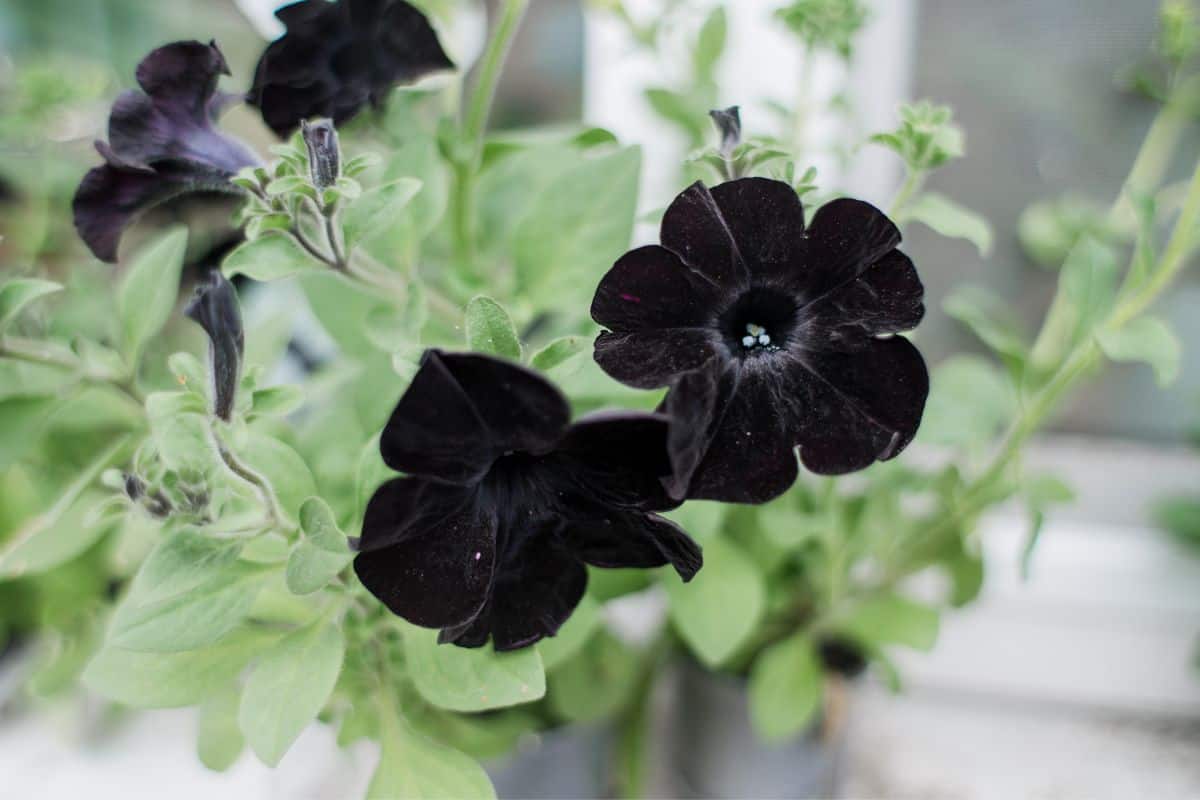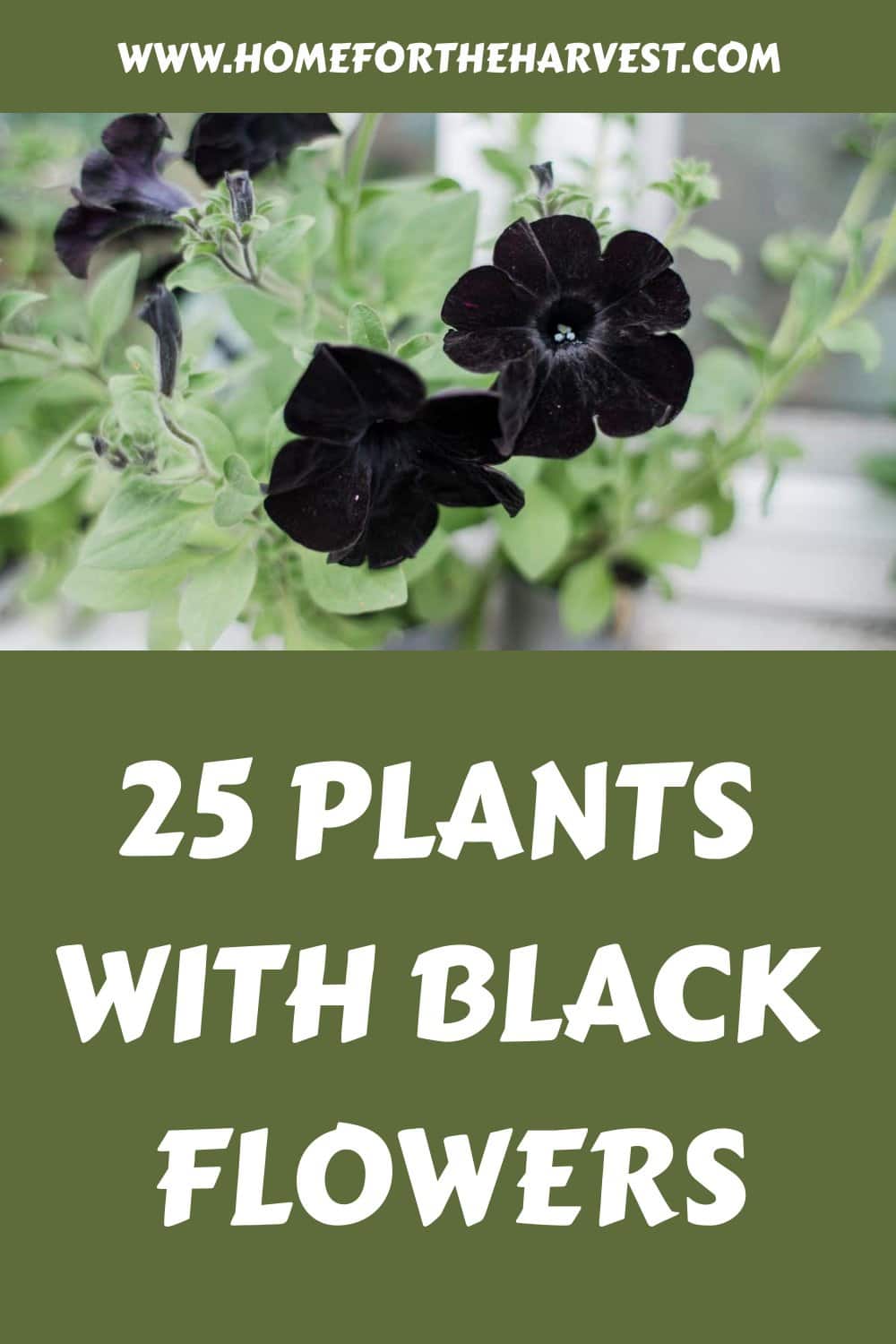Looking for plants with black flowers? Black is a dramatic and moody color, but it’s also bold and elegant. And it’s what makes black flowers the perfect way to add mystery and allure to your garden.
Jet-black or true black flowers are rare – if that is what you are looking for. In most instances, black flowers will often showcase shades of deep purple, wine red, and chocolate brown. But that’s also what makes black flowers so unique!
So get your gardening gloves at the ready, as below you’ll find 25 beautiful plants with black, and almost black, flowers to add to your garden.
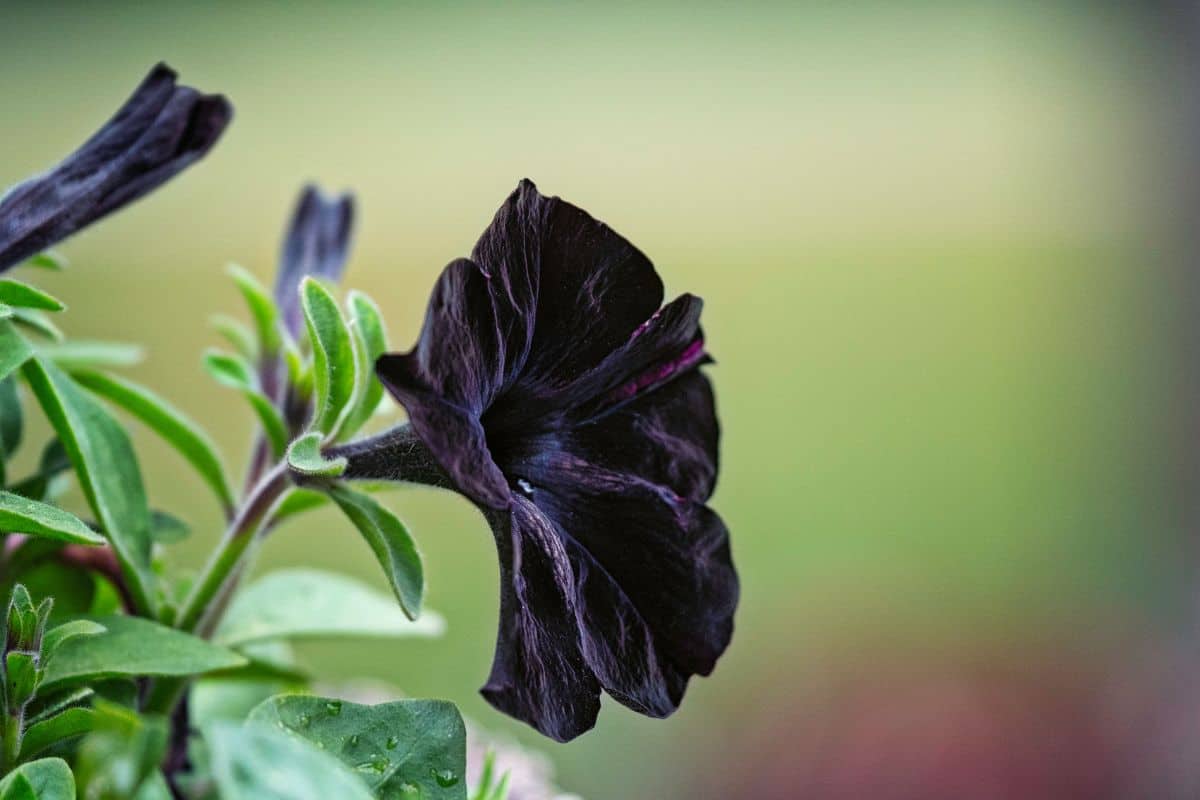
1. Black Velvet petunia
First up is the black velvet petunia, also simply called black petunia. And it blooms in a deep-black color that is about as dark as petals can get!
A popular perennial, black velvet petunias are easy to grow and maintain, blooming in the spring, summer, and fall seasons. Its velvety petals are thick and almost trumpet-shaped, which helps them stand out no matter where they bloom. This is also helped by their bright green foliage, which brings out the dark colors of the flowers.
2. Helleborus ‘Dark and Handsome’
The helleborus dark and handsome is aptly named, boasting near-black flowers with light shades of grayish purple. The petals are beautifully offset by this flower’s yellow anthers, which makes them a stunning addition to any floral garden display.
As a spring perennial, these hellebores are easy to grow and manage, often staying for several years. The leaves are leathery to the touch and evergreen. A quick growing tip is to give helleborus dark and handsome flowers partial sun, along with moist soil.
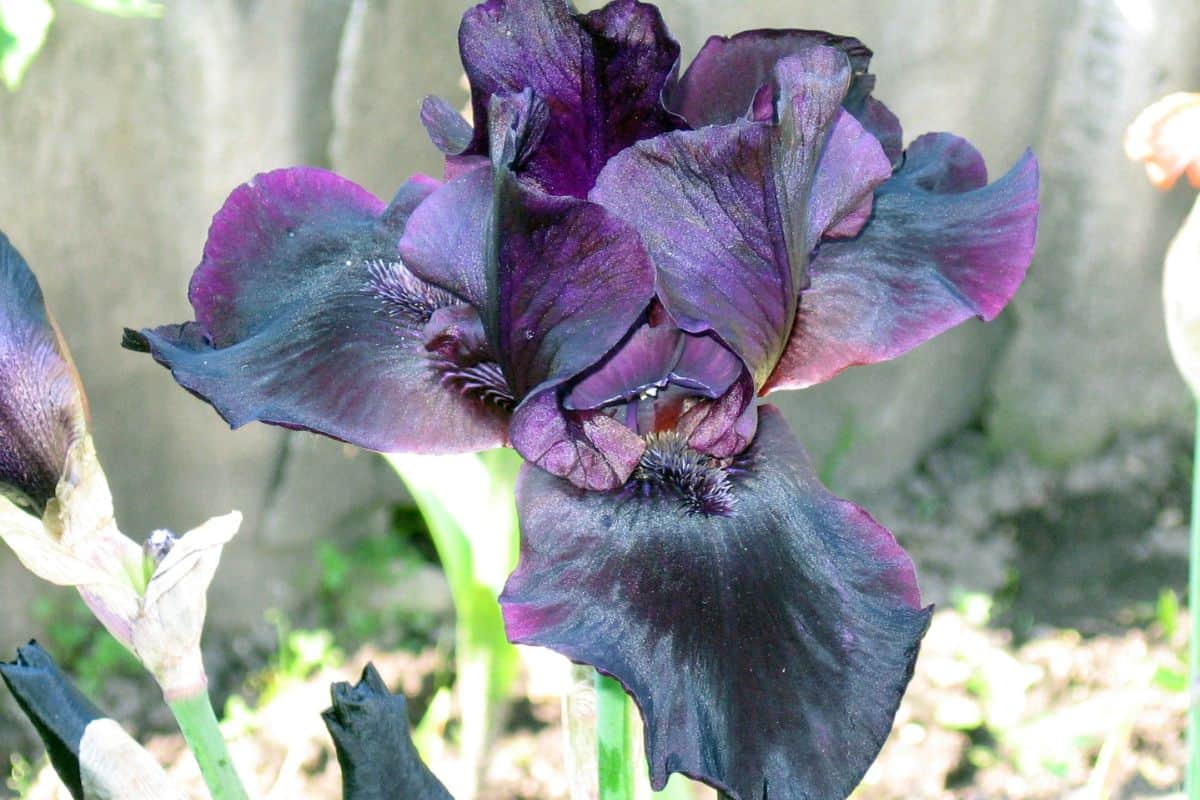
3. Iris ‘Before the Storm’
The bearded iris is a popular perennial flower that blooms in many vibrant colors – making them a great choice for decorative garden beds. This is also due to their ruffled, majestic flowers!
But it has to be said: iris before the storm is a cultivar that truly stands out from its relatives, thanks to its velvety black petals that feature soft hues of violet. The best part if you’re a gardener is that iris flowers are easy to grow, enjoying full sun and medium moisture with good drainage.
Iris before the storm has even earned a handful of awards for its appearance, so it’s a flower that also comes with an impressive reputation!
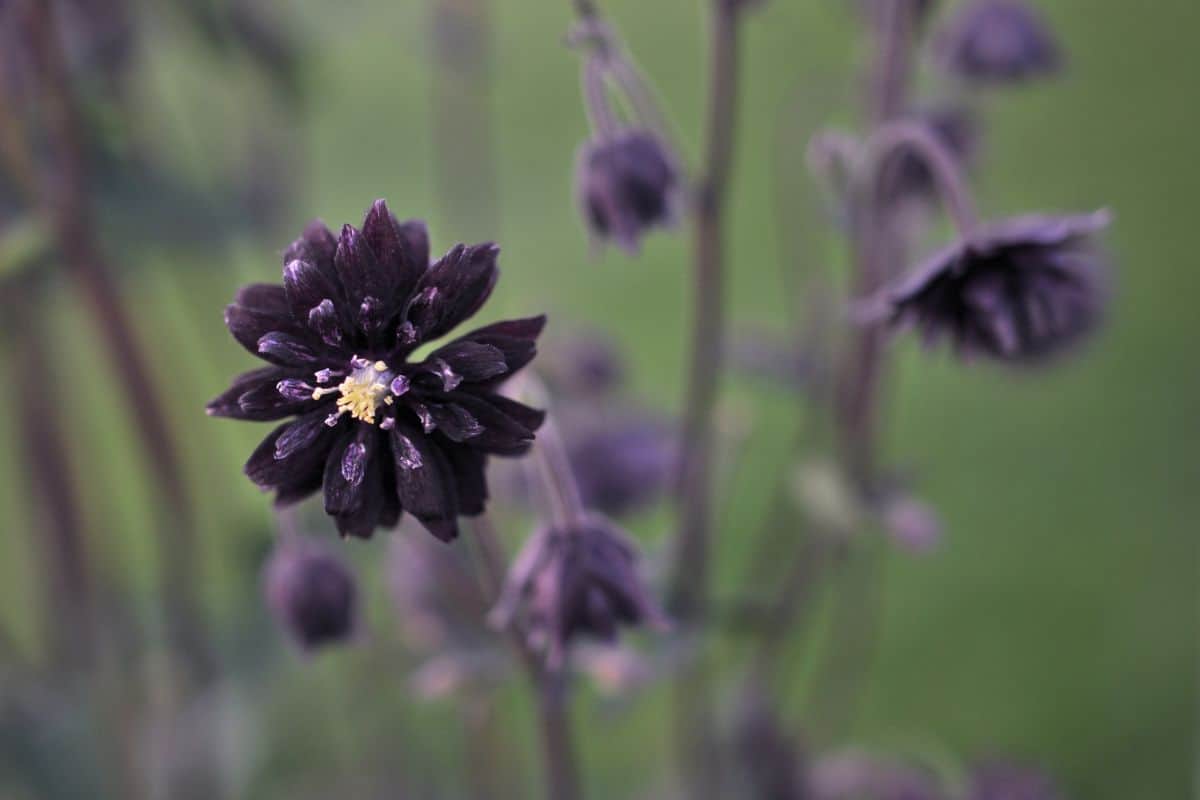
4. Black Barlow columbine
Black barlow columbine, botanical name Aquilegia vulgaris var. stellata, might be short-lived but it’s a flower that is truly eye-catching when it is in full bloom.
Growing up to a meter in height with striking flowers of black, dark purple, and violet colors, the black barlow columbine is the perfect way to add a moody character to any garden bed or floral display.
Black barlow columbines prefer partial to full sunlight, and will bloom in late spring and early summer as perennials part of the large Aquilegia family.
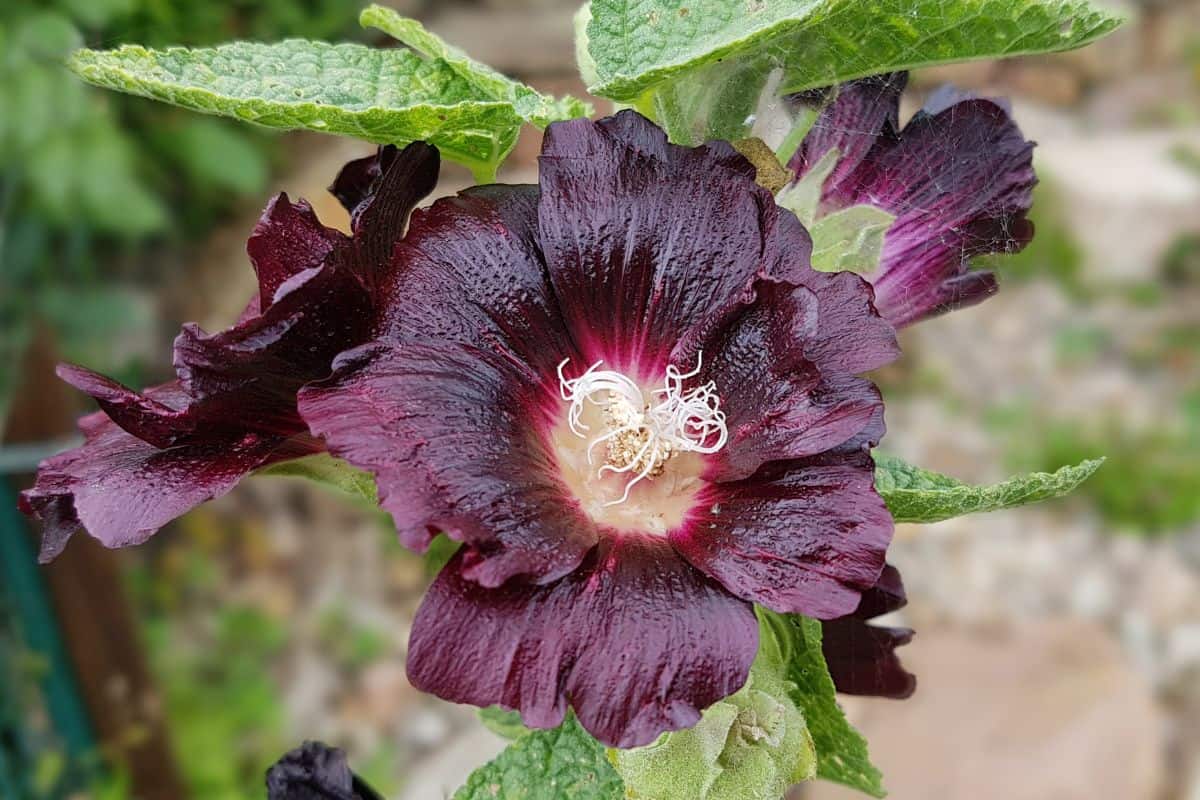
5. Hollyhock ‘Nigra’
Alcea rosea, more commonly known as hollyhock, is a popular decorative Malvaceae flower that blooms in pink, red, white, and yellow. They can also bloom in an elegant dark purple color, popularly known as hollyhock Nigra.
Best sowed in spring to bloom in the summer and fall months, hollyhock nigra flowers produce waxy petals in a neat, circular arrangement with hues ranging from wine red to deep purple and black.
They can grow as tall as sixty inches, which has made them a popular choice to grow beside walls and garden fences – especially when grown next to flowers of more vibrant colors!
6. Viola cornuta ‘Blackout’
Viola cornuta blackout flowers are true to their name, having near jet-black petals with a soft, velvety appearance. The yellow eyes further bring out the flower’s midnight-black hue, alongside the light-green foliage that low-growing flowers bloom on top of.
Thanks to their dainty look and compact spread, violas have always been a popular choice for garden beds and window boxes. And it’s the abundant flowers that violas produce that give the viola Blackout such a fitting name!
Violas are spring-blooming perennials that are frost-hardy but averse to heat. That said, they are easy to look after and can grow back each year with proper maintenance.
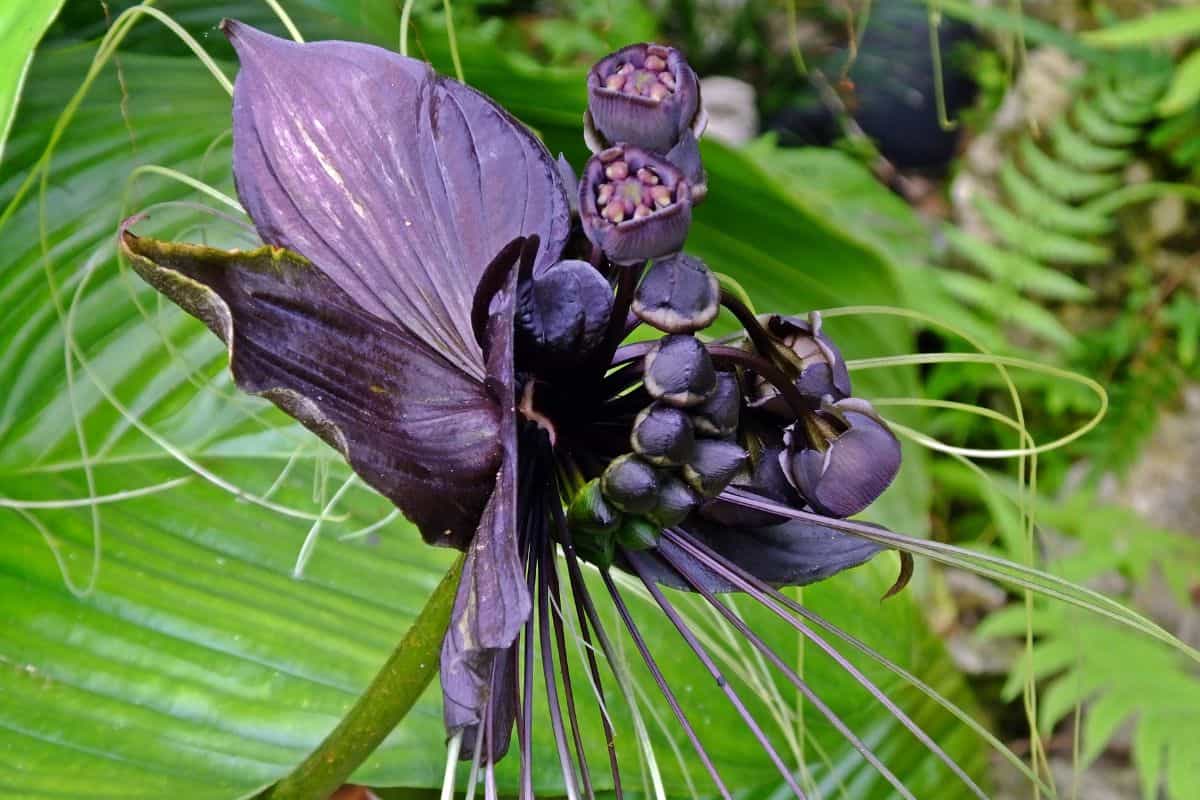
7. Black bat flower (bat orchid)
The Bat orchid (tacca chantrieri), more commonly known as the black bat flower, is a rare plant with an appearance that’s hard to describe. But one thing’s for certain: it’s exotic-looking and unique, with wing-like black flowers and spider-like filaments. So, in a way, it does look like a bat in flight!
The black bat flower is, in fact, considered endangered due to its unique habitat requirements and historic uses. Despite that, the black bat flower can be grown in hot and moist environments, preferring ample shade to full sun. And if this plant is well-maintained, its unique appearance is nothing less than eye-catching!
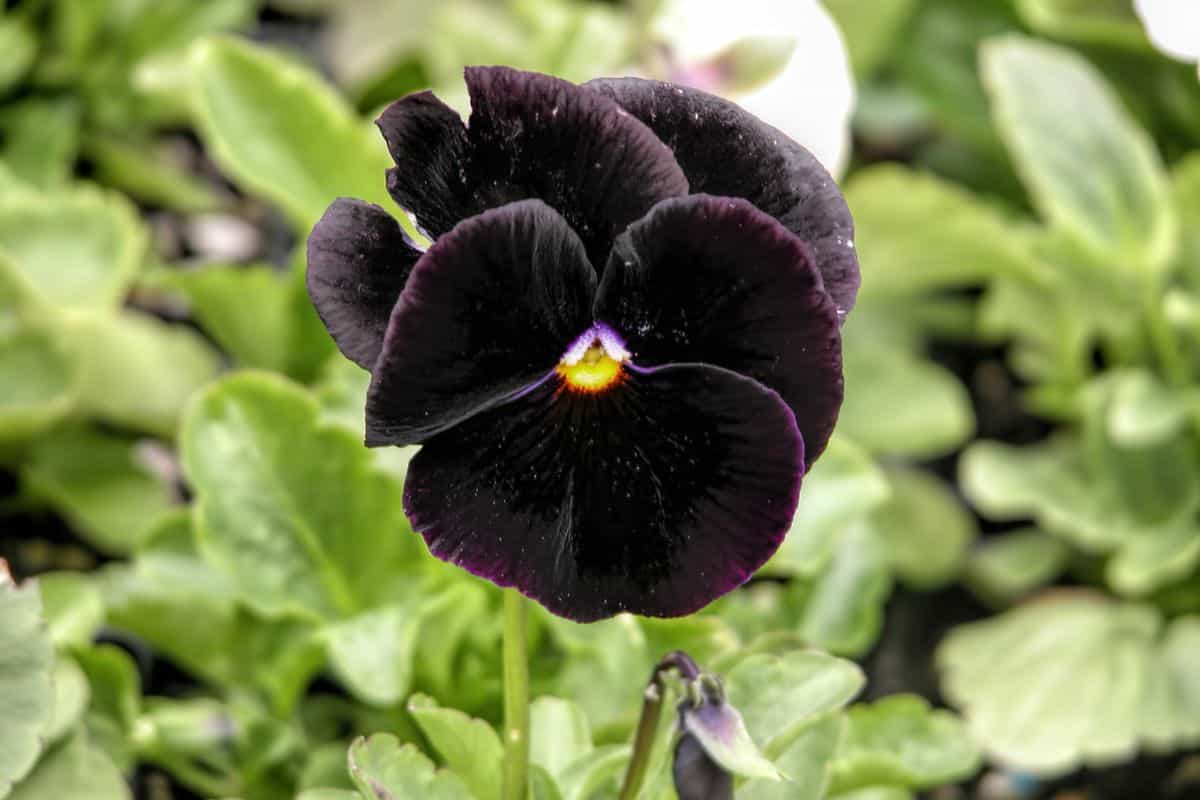
8. Black Beauty pansy
Small, dainty, and bountiful, pansies make for great decorative garden bed flowers that are just as popular as violas. You can even grow black pansies indoors!
And in complete contrast to their usual vibrant colors, the black beauty pansy is a black flower that will add a dramatic, moody quality to any garden.
In many ways, black beauty pansies share a similar look with blackout violas (also popular in garden beds and window boxes), except with darker midnight-black flowers that are larger and more spread out.
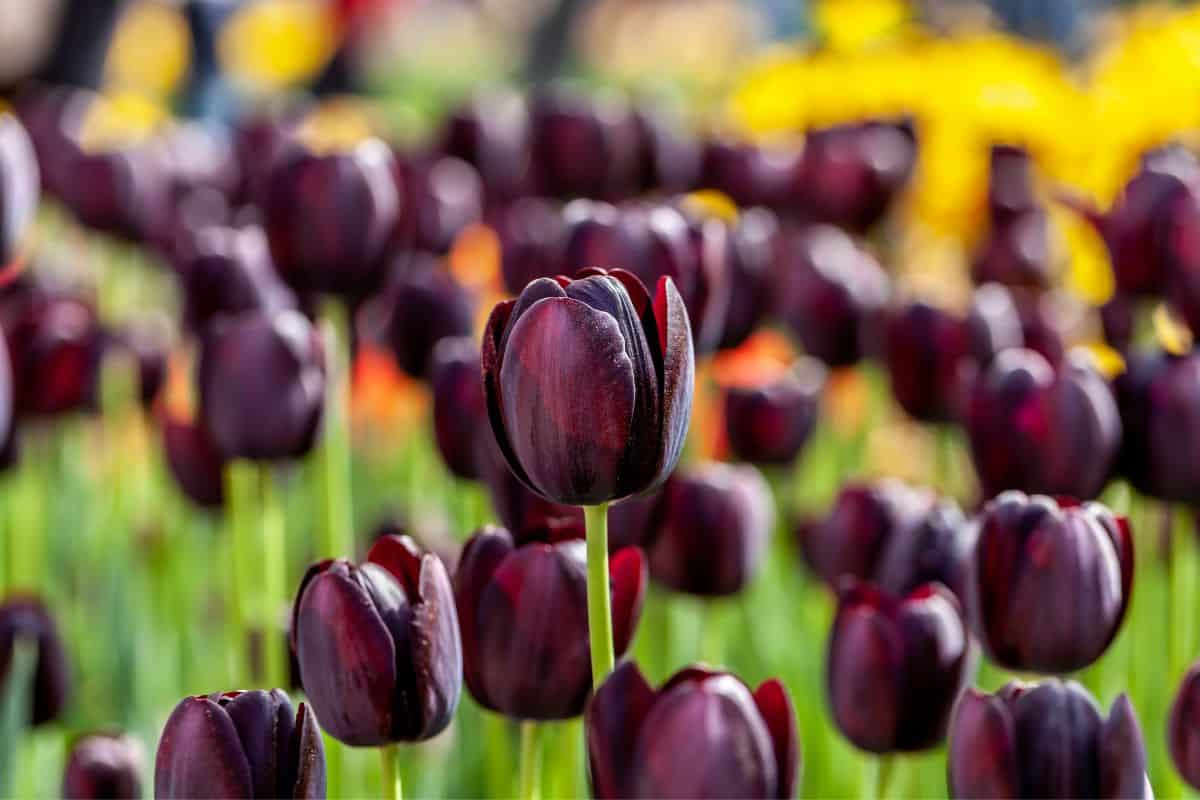
9. Queen of Night tulip
It’s the recognizable bell shape that makes tulips some of the most sought-after flowers around the world. Black tulips do exist, though, with a name that sounds as elegant as these flowers look.
Queen of Night tulips bloom in a blackish purple color that sometimes produces tints of pink and wine red, making them an elegant addition to garden beds and pot displays. They can also be brought indoors!
And like the rest of its family, the queen of night cultivar is widely known for being easy to grow, enjoying lots of sunlight and regular soil composition with ample drainage.
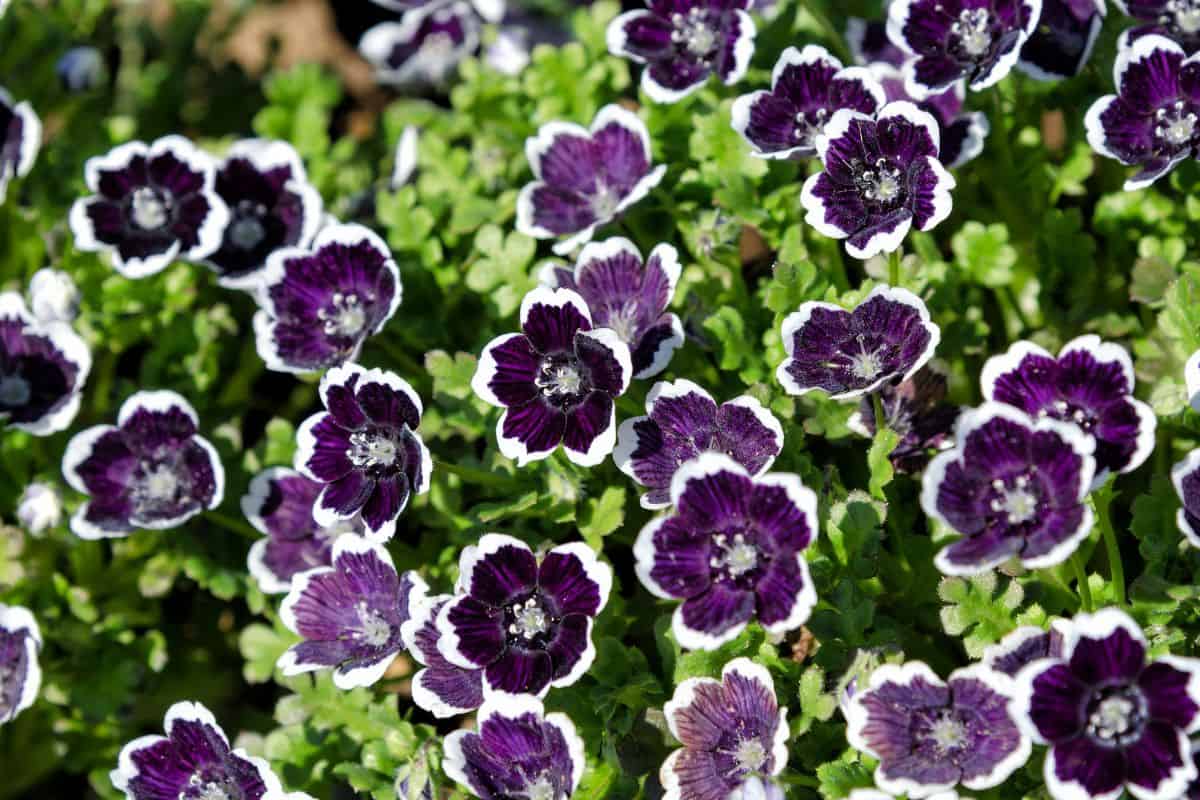
10. Nemophila menziesii ‘Penny Black’
Nemophila menziesii is a popular garden plant, better known as baby blue eyes due to their soft blue colors. There is a black cultivar of this popular flower, however, named Penny Black.
Penny black nemophila flowers are unique in the way that their black flowers have bright white edges on every petal – a contrast that makes them effortlessly stand out wherever they are grown, despite being low-growing flowers!
Penny black flowers are annuals and typically flower in winter temperatures, blooming until late spring and early summer.
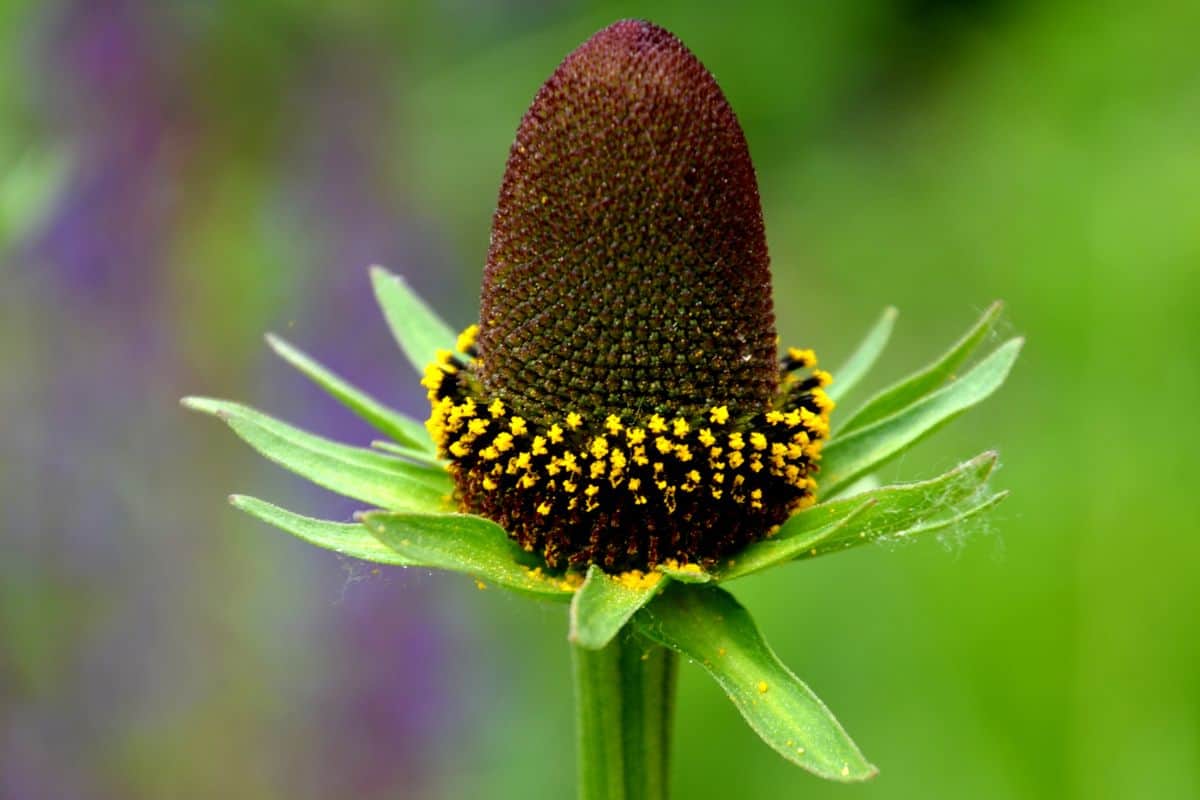
11. Green Wizard coneflower
Green wizard coneflowers are another flower that’s been aptly named after their appearance. The flowers look like acorns, with spiked sepals and a ring of yellow pollen that only makes them look more interesting!
What’s special about the green wizard coneflower is its tall height—up to five feet tall—which allows it to stand out even when planted at the back of a garden bed beside walls and fences. As perennials, these unique black flowers of the daisy family are also easy to cultivate, blooming each year.
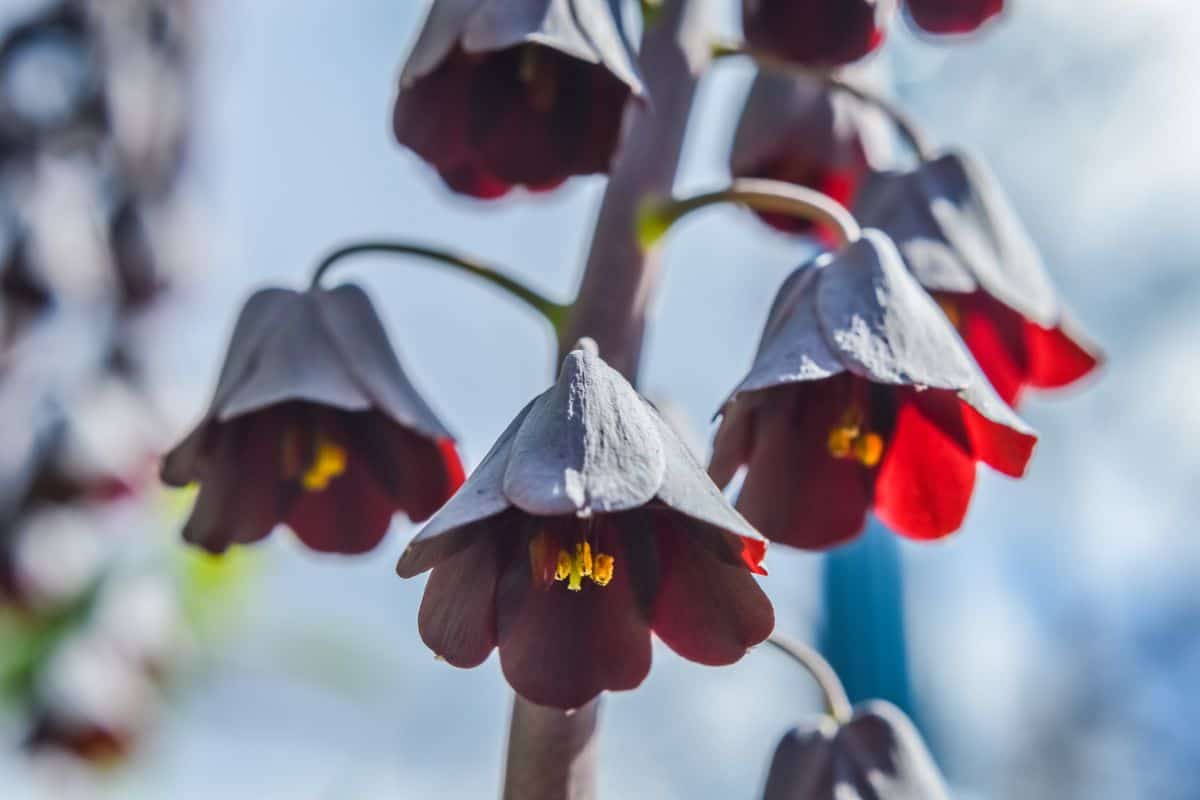
12. Fritillaria persica (Persian lily)
Fritillaria persica, popularly known as the Persian lily, is a truly stunning flower to grow in your garden. It’s the upside-down hanging bell flowers that give it its alluring quality, as well as its soft shades of deep violet and black.
And like the green wizard coneflowers above, Persian lilies are relatively tall plants that can grow up to two feet tall. So for the back row of any garden bed, these elegant-looking black flowers are a great choice.
Persian lilies are best planted in fall to be ready to bloom by late spring, and you might be glad to know that they are easy to care for!
13. Dianthus chinensis heddewigii
Dianthus chinensis heddewigii is a flower with various names, including black velvet and lace and black and white minstrels. And as these names suggest, this flower is black and white – specifically a deep black with pinkish-white petal tips.
But that is not the only reason the black velvet and lace flower stands out, as it also blooms in a showy layered rosette! So this flower is the perfect addition to any drab-looking garden bed that needs livening up, since its black and white petals are both striking and dramatic.
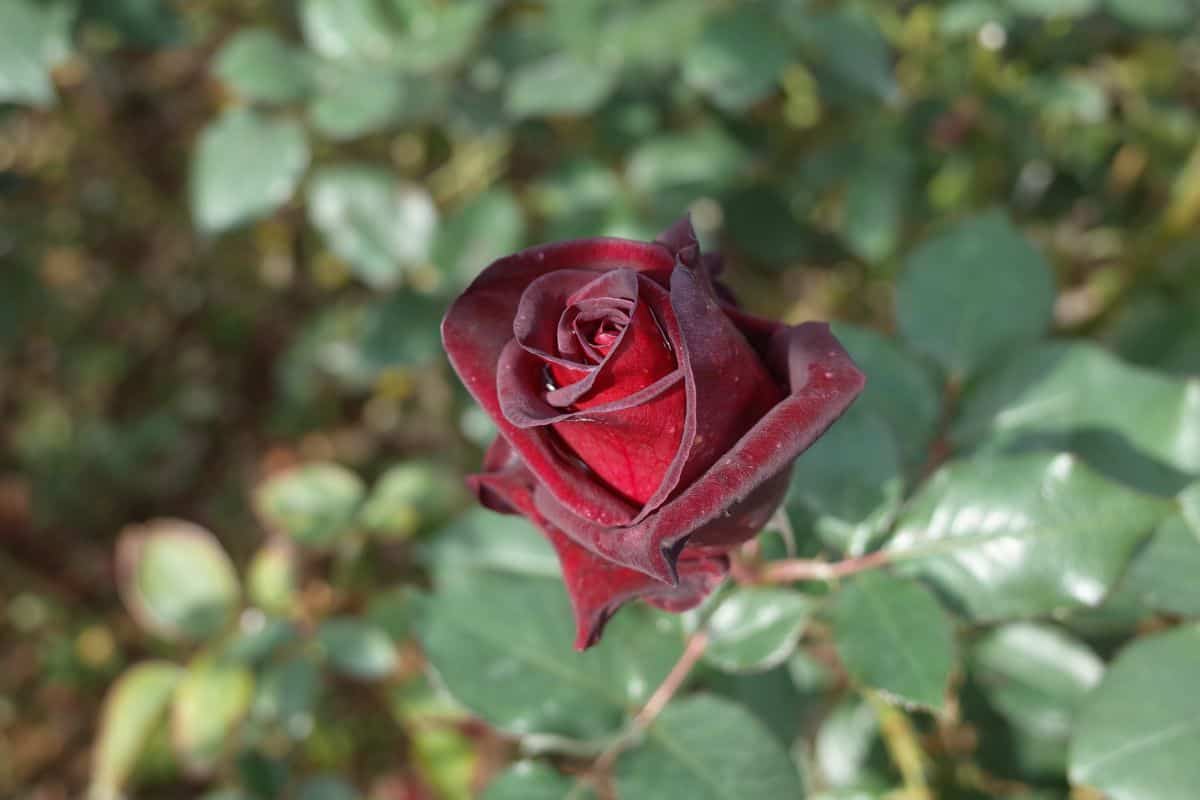
14. Black Baccara rose
While pure black roses don’t exist (despite where you might have seen them!), Black Bacarra roses are among the darkest roses you can grow naturally.
The color of these roses is dark wine red with hues of purple and black, giving them a moody, dignified appearance that will add character to any garden bed or room. They also look stunning in rose bouquets and vases!
Black baccara roses are hybrid flowers that have been around for less than two decades. So if you love roses and want to impress neighbors or guests, these are must-have decorative flowers for both the garden and home.
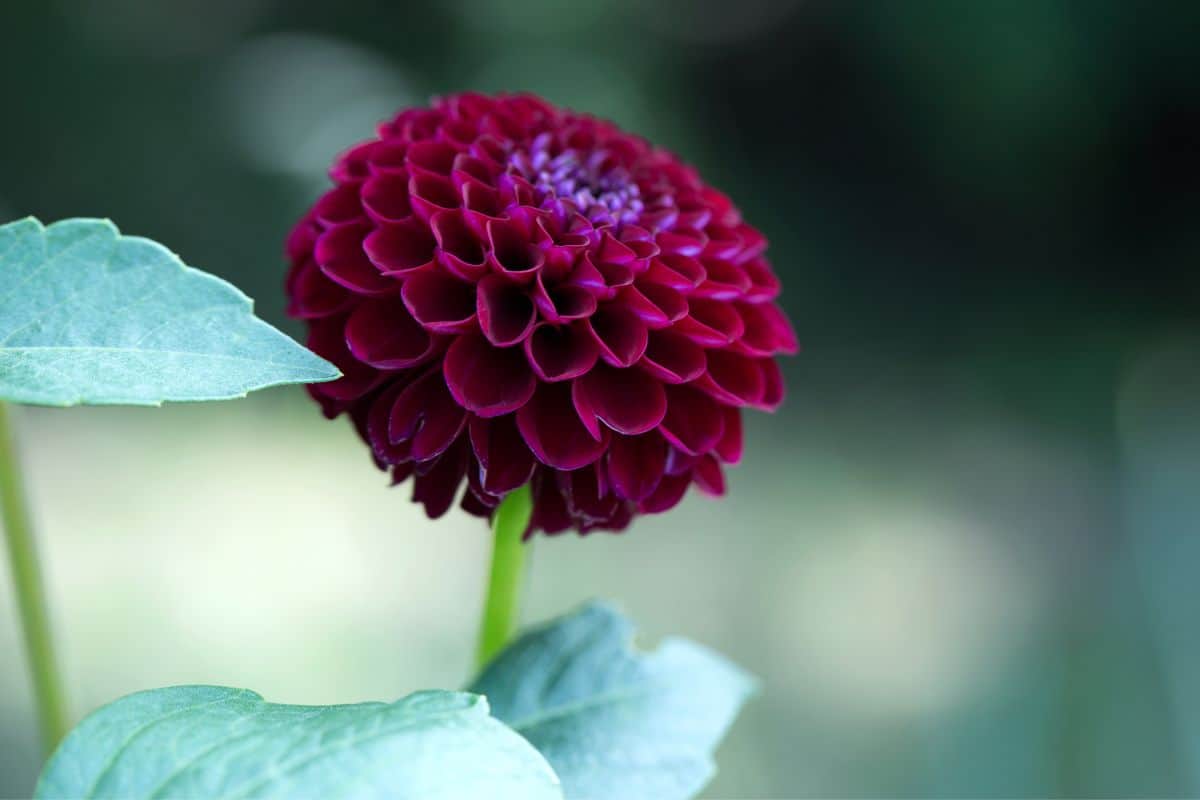
15. Dahlia ‘Karma Choc’
Dahlia karma choc flowers are eye-catching at first glance. The flowers bloom with a chocolate-black-colored center, accentuated by scarlet-red outer petals, in a neat pinecone-like rosette.
So if red and black are your favorite colors, dahlia karma choc flowers might just become your new favorite! This dahlia also has a sturdy, rigid stem that can grow up to a meter in height, standing tall and proud in any garden flower display. If planted in late spring and early summer, dahlia karma choc flowers will bloom from July to late winter.
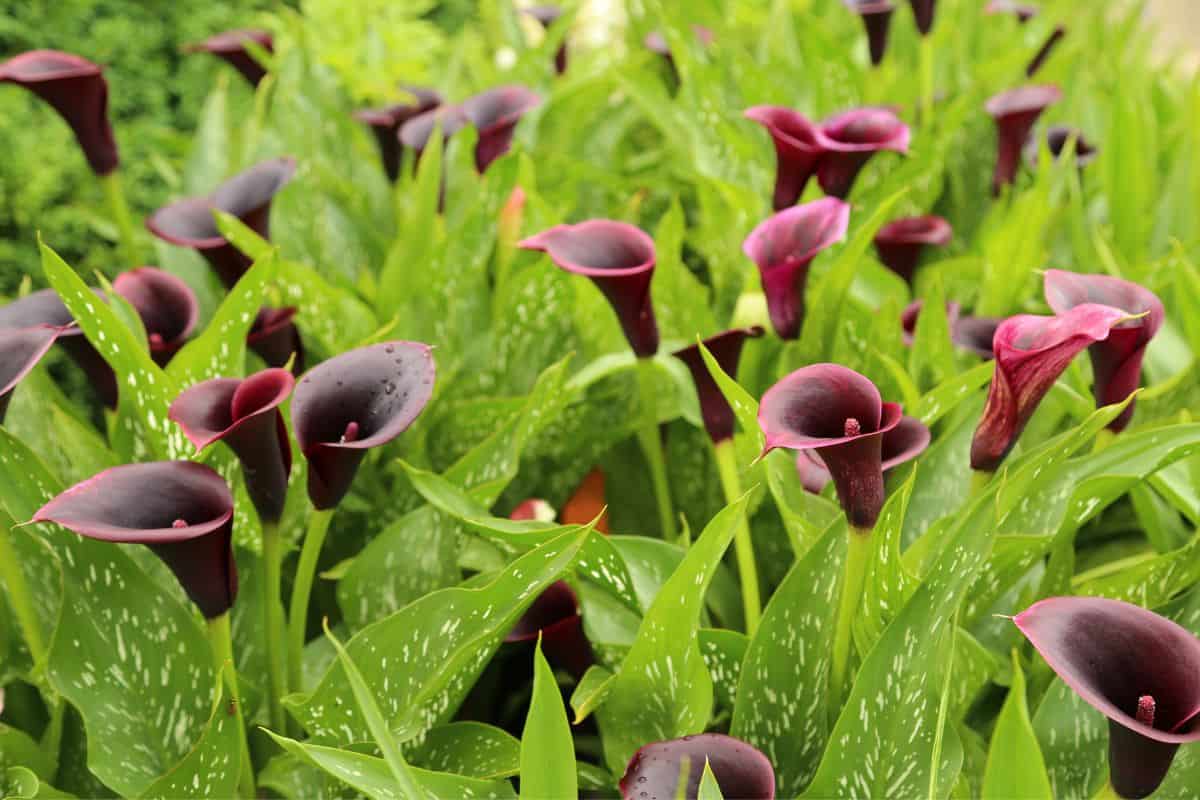
16. Black Star calla lily
The black star calla lily, also known as zantedeschia black star, is a unique plant with bold trumpet-shaped flowers that bloom in dark shades of purple and maroon, which appear black in the right light!
Unlike many of the other black flowers on this list, the black star calla lily has glossy petals that have a wettish appearance under bright sunlight. The foliage has white speckles too, adding to this flower’s unique and elegant appearance.
Black star calla lilies can grow around half a meter tall, returning each year in early summer with the correct care.
17. Black Prince snapdragon
While not true black, black prince snapdragons have bold red and purple flowers that can sometimes appear a grayish-black color. For that reason, these flowers make a great addition to garden beds with pink, purple, and red flowers. They also provide variation thanks to their unique lance shape!
Snapdragons usually bloom in bright, luminous shades of pink, red, yellow, and orange, which is what makes the darker black prince snapdragons turn heads in any floral garden display. They are perennials (with a short life), but can also be grown as annuals, blooming each summer in time for a moody look to any garden come winter.
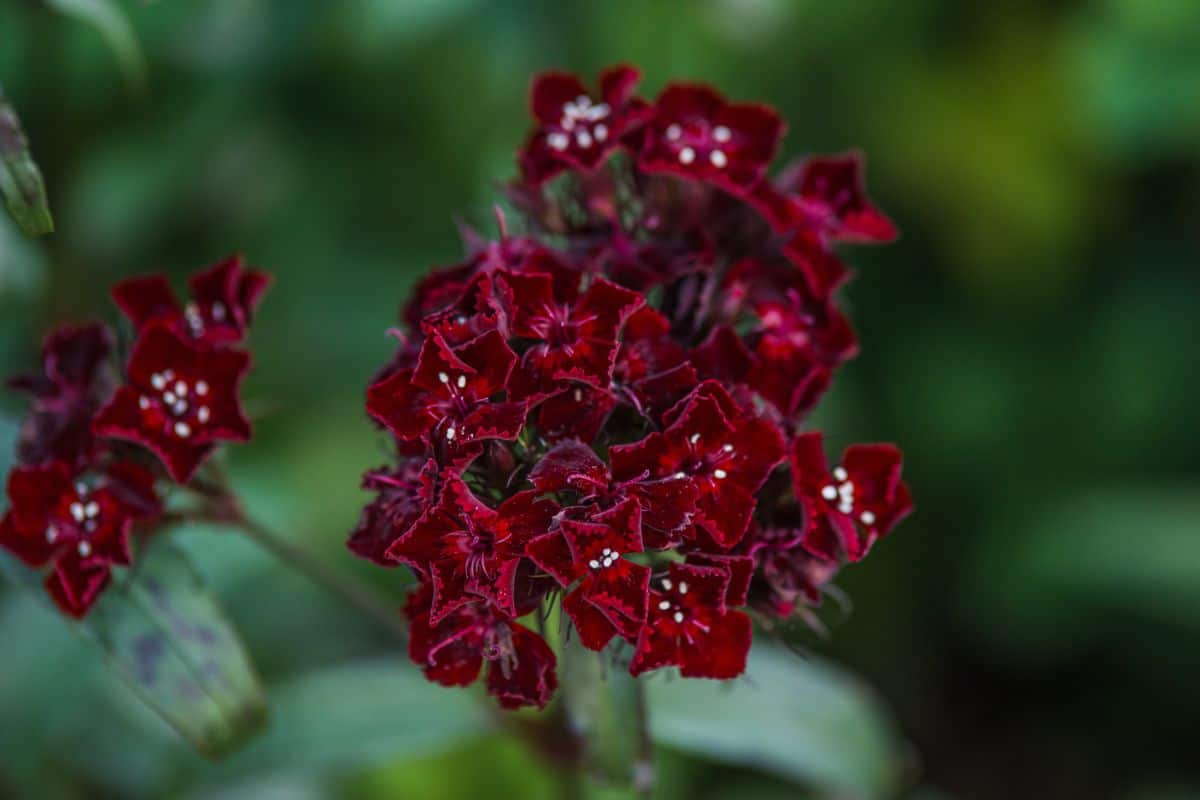
18. Sweet william ‘Sooty’
Sweet william (dianthus barbatus) sooty blooms in clusters of dainty brownish red flowers that almost look black. And if well-maintained, sweet william sooty flowers can even look great on their own thanks to their bushy bed of leaves!
Still, the pretty flower clusters make it a popular choice for cottage gardens, especially if placed beside white and yellow flowers that accentuate the sweet william sooty’s deep red color.
Sweet william sooty flowers bloom in the spring and summer months. They are drought-tolerant and will also reseed each year!
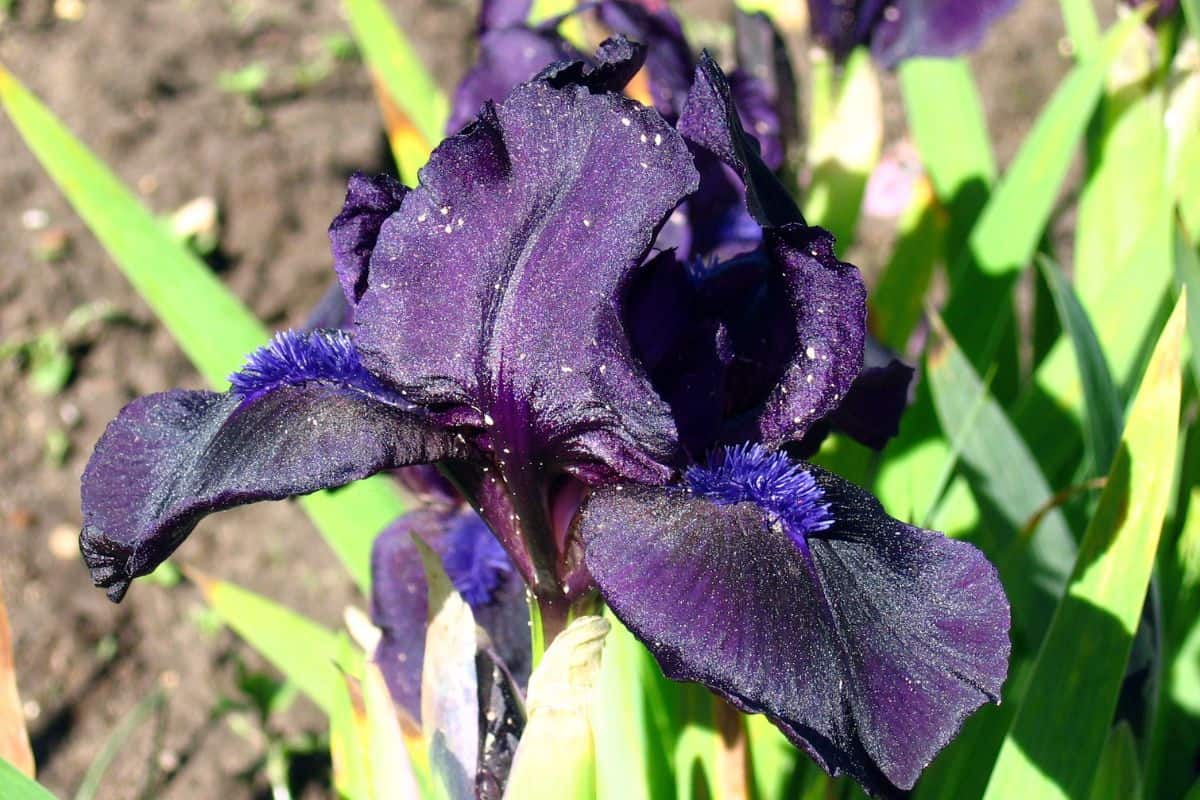
19. Iris ‘Dark Vader’
The Dark Vader iris blooms in a lighter shade than iris before the storm (listed above), with dark purple flowers that can appear black in the center and around the edges. And like all iris flowers, it has a majestic appearance that will spruce up any garden.
The iris dark vader is hardy to the cold and will bloom throughout the middle and late summer months if planted in the fall.And you might be glad to know that these flowers thrive in almost all climates, including hot temperatures and full sunlight. So they are an easy plant to grow and take care of!
20. Fritillaria biflora (chocolate lily)
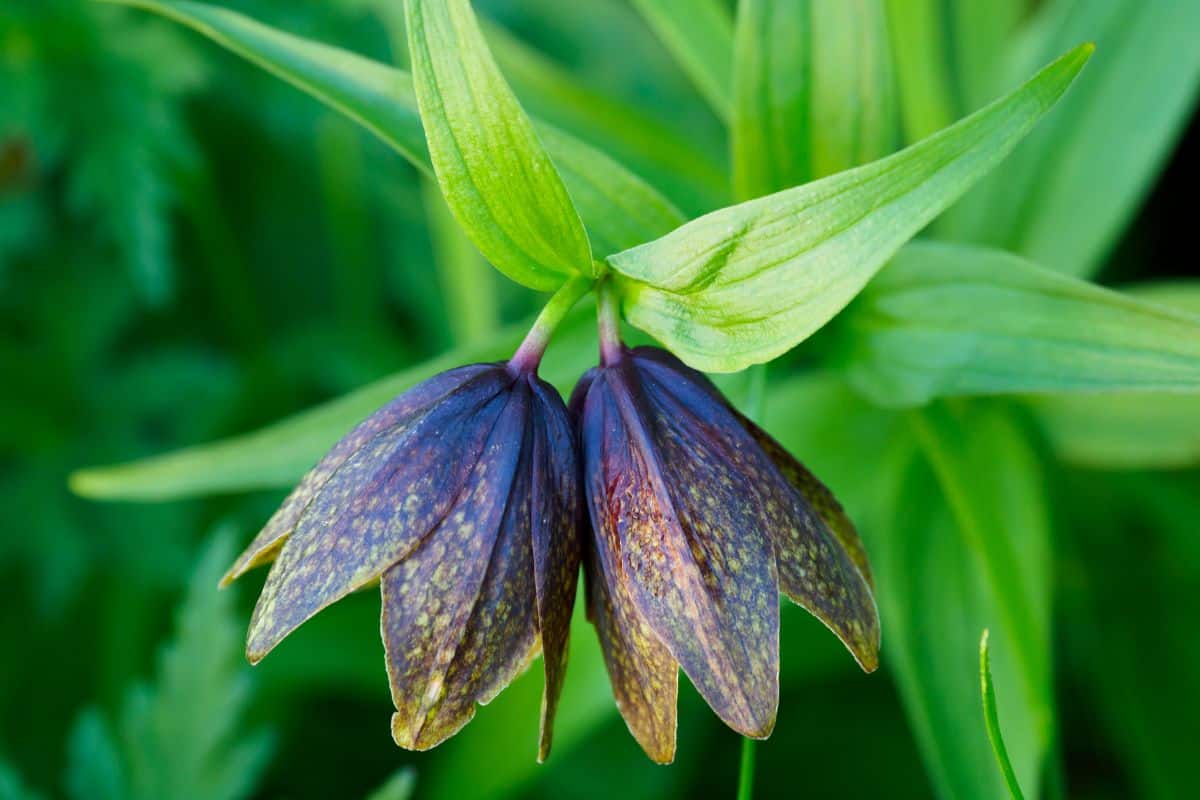
Fritillaria biflora, better known as chocolate lily (sometimes called mission bells), is a dramatic choice for any garden due to its hanging flowers that are a chocolate brown color – a truly moody flower!
Chocolate lilies almost have a starfish shape and will look like trumpets early on in their blooming stage. The greenish-yellow anthers also help to give these flowers a unique look that contrasts with their dark petals. But despite their intriguing appearance, Chocolate lilies give off an unpleasant scent, which can also attract flies.
21. Hyacinth ‘Dark Dimension’
Hyacinth dark dimension flowers look as dramatic as their name, blooming in dense upright clusters of a deep purple, blackish color. So they are an easy way to give any garden bed a more mysterious, intriguing look.
What’s also great about this flower is that, unlike the chocolate lily listed above, hyacinth dark dimension has a nice fragrance that attracts various pollinating insects (not flies!).
Above all, these flowers look beautiful in the foreground or background of any floral garden bed, providing contrast and variation due to their dark, dense flowers.
22. Helleborus ‘New York Night’ lenten rose
Helleborus new york night flowers love the shade, which is fitting of their blackish purple color. The name of these flowers is also fitting, thanks to the yellow stamens that give it an appearance reminiscent of city lights.
Sometimes these hellebores can bloom in maroon and burgundy shades. But, in most cases, they display deep purple flowers that look almost black.
The flowers of the helleborus New York night are not as ornate as the Helleborus dark and handsome, but they are ideal for your garden if you prefer simple flowers that still manage to look bold and dramatic.
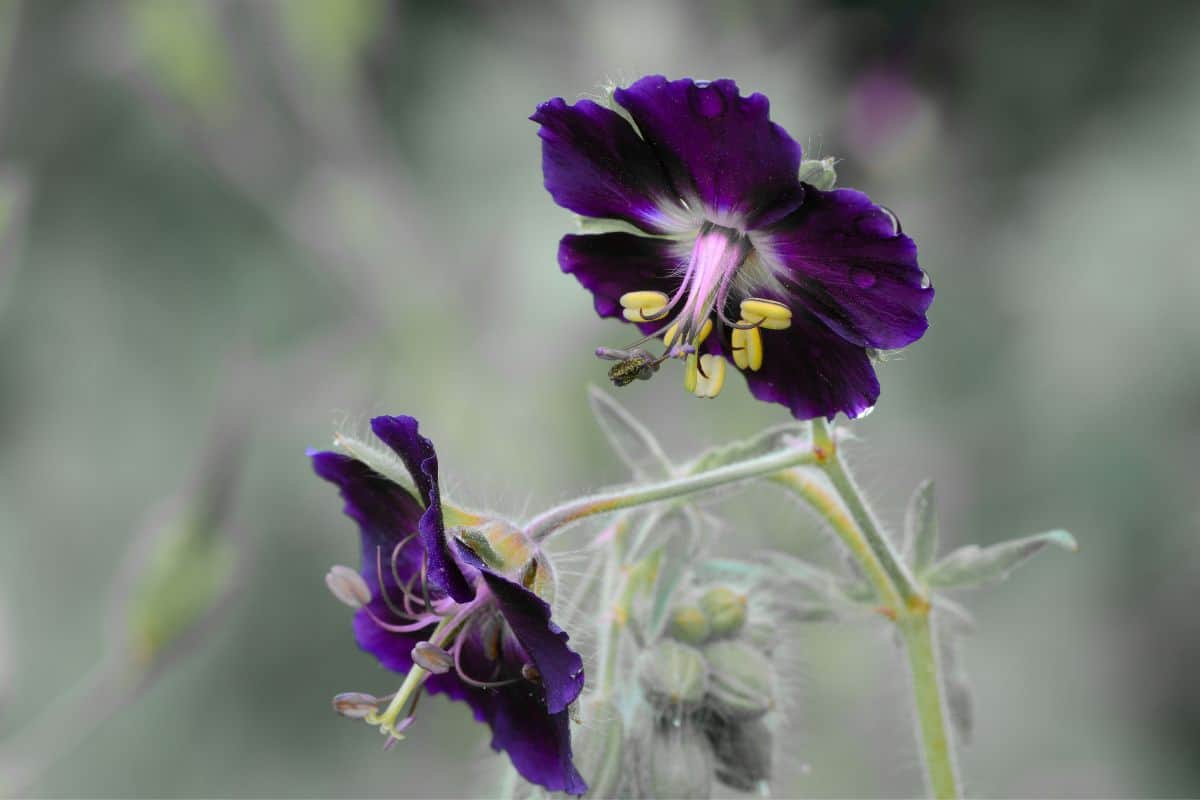
23. Geranium phaeum ‘Mourning Widow’
Geranium phaeum is commonly known as mourning widow – a black flower with a name to match its moody, mysterious appearance.
While not a showy flower, mourning widows are most interesting when viewed close up thanks to their intricate yellow eyes.
As a result, mourning widow flowers make great cut flowers for any indoor space, especially since they are happy to grow in partial shade.
As evergreen perennials, these almost-black flowers bloom in the spring and summer, and require little maintenance to look after!
24. Helleborus ‘Onyx Odyssey’
The helleborus onyx odyssey is another hellebore flower that has matted black petals with dark purple tips. This flower blooms in a layered rosette (up to 20 petals!), with bright yellow anthers that further accentuate its dark appearance.
This is an elegant, sophisticated flower that will add a mysterious and moody quality to any garden bed or floral display. It’s a large flower too, so it makes sure it doesn’t go unnoticed!
Helleborus onyx odyssey will bloom from winter to spring, lasting throughout summer.
Compared with the helleborus New York night, this cultivar has a darker color similar to the helleborus dark and handsome.
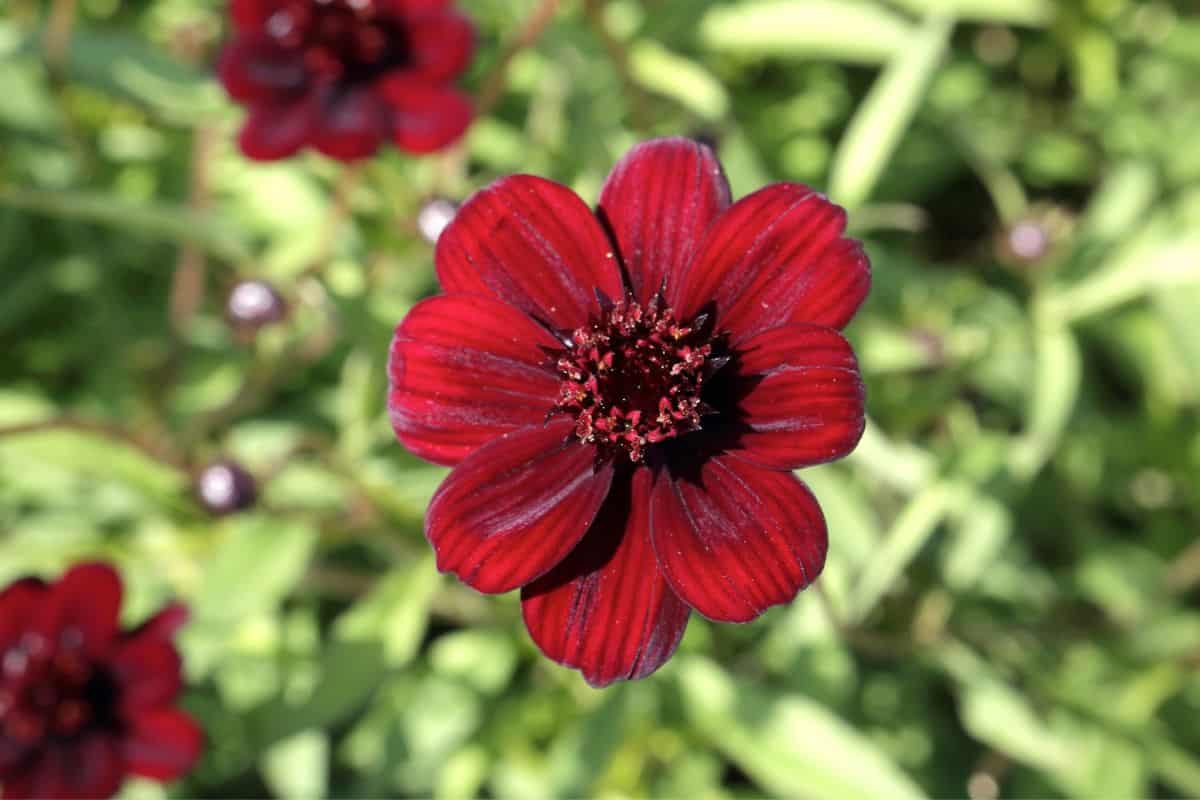
25. Chocolate cosmos
Cosmos atrosanguineus, more commonly known as chocolate cosmos, is a dark red and black flower that is similar in color to the dahlia karma choc.
But while it might not have the same showy rosette, the chocolate cosmos is an elegant and alluring black and red flower that is unique because of its rounded, overlapping petals that can appear much darker (than dahlia karma choc) towards the center.
Chocolate cosmos flowers bloom in the summer and autumn months. And despite being native to Mexico, these plants are hardy to the cold and can even survive well indoors.
No matter where you grow them, however, it’s yet another almost-black flower that will easily stand out!
FAQs about plants with black flowers
Why are black flowers rare?
Black flowers are rare because the natural pigments in flowers don’t usually produce black colors. Black also doesn’t much help flowers to attract pollinating insects! Despite that, “black” flowers exist, typically in dark, blackish hues of purple, red, and brown.
What do black flowers symbolize?
Due to their uniqueness and rarity, it is not uncommon for black flowers to be associated with symbolism. This can include mysteriousness, elegance, power, and sophistication. Black flowers, especially black roses, are often seen as symbols for the end of love or romance.
Does a black rose exist?
Despite their symbolism and popularity, black roses don’t exist naturally. The closest you can get to a natural black rose is likely the Black Baccara rose, Black Velvet rose, or the Black Magic rose, which all bloom with dark red petals.
Before you go…
Flowers are beautiful no what the size, shape, or color. If you want to learn more abut flowers and how to make your garden looking spectacular, click here!
References
- University of Saskatchewan: Black Flowers
- University of Florida: Bat flower
- University of Utah: The Genetics of Flower Color
Black flowers
Interested in learning more about black flowers and how they can help turn your space into a beautiful area? Look no further. There are many articles that will help you and show you how to create your perfect garden, even with black flowers!


